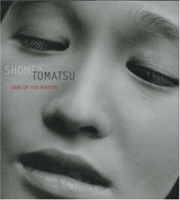| Shomei Tomatsu : Skin of the Nation артикул 2716e. |
 |
Amazon comA beer bottle that withstood the atom bomb blast in Nagasaki is the subject of Shomei Tomatsu's most famous photograph Mysterious and repulsive, the object looks like a deformed fetus In a career spanning more than 50 years, Tomatsu has created strikingly ambiguous images that hint at tensions simmering below the surface of Japanese озщшм life Shomei Tomatsu: Skin of the Nation is the first English-language survey of this brilliantly idiosyncratic photographer's work Grouped by theme, morethan 100 images contain subtle layers of meaning On a Tokyo street in 1962, an abandoned high-heeled shoe, a cigarette butt, and a crumpled piece of tinfoil (likely from a stick of American chewing gum) are bitter souvenirs of a night on the town A fewyears later, Tomatsu captured the sense of isolation that envelops both a lone protestor and a shadowy group of policemen In Okinawa, Tomatsu photographed both the U S military presence and the traditional way of life that persisted into the 1970s--glimpsed in the breeze-stirred motion of a curtain against a window or the sight of prowling dogs in the hazy morning sun Leo S Rubinfien's revelatory essay about the photographer and his work has a lyrical grace that approaches poetry Sandra S Phillips deftly summarizes the shift from American-influenced photojournalism of the immediate postwar era to the subjective approaches of a younger generation John W Dower adds further historical context, including the disquieting fact thatdue to U S censorshipphotographs of the devastation of Hiroshima and Nagasaki were not published in Japan until 1952 Excerpts from Tomatsu's own vivid writings add another layer of insight The handsomely designed book accompanies a retrospective exhibition of Tomatsus work at the Japan Society Gallery in New York (through Jan 2, 2005), which will travel to Washington, D C , San Francisco and Winterthur, Switzerland --Cathy CurtisBook Description Japan’s brilliant and influential postwarphotographer Shomei Tomatsu (b 1930) has created some of the most dramatic images in the history of photography Many of his photographs have become icons of the twentieth century This important book is the first in-depth English-language study of Tomatsu’s work Richly illustrated and handsomely designed, it features more than one hundred plates representing—in ten thematic sections—the full range of his career Tomatsu emerged in the 1950s with his sensitive pictures of postwar Japan In the 1960s the artist turned his camera to the aftermath of the atomic bomb and the lingering presence of the U S military in his homeland In subsequent decades his lens has captured the elation of Japan’s economic boom and the problems inspired by his culture’s increasing westernization Throughout, Tomatsu’s pictures have consistently resonated not only with Japanese society but also with American culture Included in this book are essays by distinguished scholars on all aspects of the artist’s life and career as well as a selection of brief excerpts from Tomatsu’s own writings, many of which have never appeared in English Skin of the Nation (the book’s subtitle) is both a literal and metaphorical reference to the surfaces that have appeared in countless pictures throughout Tomatsu’s career For the artist, skin is more than just a surface, it is a kind of map in which one can read the story of Japan—its essence and its future. Оригинальное2004 г 224 стр ISBN 0300106041. |